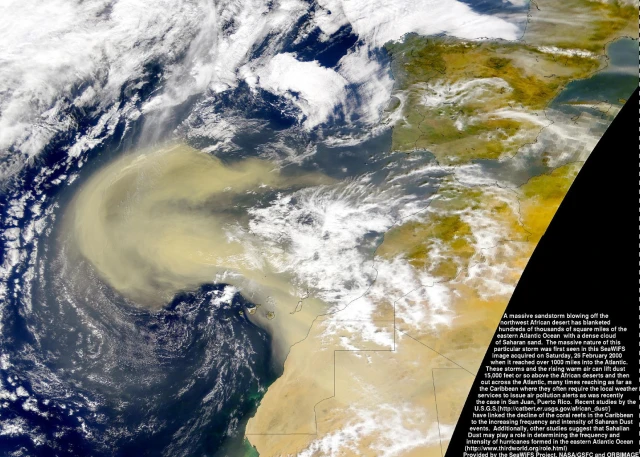The Aerosol-Climate Interactions group is dedicated to unraveling the intricate relationships between aerosols and climate. Our research aims to enhance the accuracy of future climate predictions and to inform the potential risks, advantages, and unintended effects of aerosol-based climate intervention methods.
Our group has a particular affinity for studying desert dust aerosols. These fascinating particles account for approximately two thirds of total aerosol mass and have likely increased by over 50% since pre-industrial times. Dust impacts the climate system in many ways, most prominently by scattering and absorbing radiation, seeding clouds, darkening snowpacks, and fertilizing ecosystems upon deposition. It remains unclear whether the sum of all these effects results in an cooling or warming of the Earth by dust. Part of the work in our group is focused on clarifying this and determining the net climate impact of dust and its radiative forcing since pre-industrial times.
This research is vital because the radiative forcing from dust and other aerosols is the primary uncertainty in calculating climate sensitivity , which is crucial for predicting the climate system’s response to ongoing greenhouse gas emissions. Additionally, understanding the climatic effects of dust is essential for predicting whether changes in dust levels, potentially driven by desertification, will counteract or amplify future human-induced climate changes (see here for a talk on these topics). Our research also extends to evaluating the role of dust in mixed-phase and cirrus clouds, which is fundamental for assessing the feasibility of climate intervention techniques like mixed-phase cloud thinning and cirrus cloud thinning.
Research in the Aerosol-Climate Interactions group can be roughly divided in two categories:
- Big picture questions: This work involves addressing overarching questions such as “what has been the radiative forcing due to the historical increase in desert dust?” and “what cooling effect can be achieved by thinning cirrus clouds by seeding with ice nucleating particles?”
- Process understanding: This work focuses on building understanding of specific processes, for instance answering questions like “how does dust affect the partitioning between ice crystals and liquid droplets in mixed-phase clouds?”.
These top-down and bottom-up research approaches fertilize each other: answering the big picture questions usually requires a detailed understanding of the underlying processes. Vice versa, determining which processes are worthy of detailed study is informed by an understanding of where the main uncertainties lie in answering the big picture questions.
We use a variety of analytical and theoretical methods, simple first-principles numerical models that run on desktop computers, and large-scale climate models that require supercomputers. Our group also occasionally conducts targeted field and laboratory measurements.
Work on big picture questions in the Aerosol-Climate Interactions group
Our group strives to answer fundamental questions related to the impacts of aerosols on climate and society. Does dust warm or cool the climate, and by how much? Exactly by how much has dust increased since pre-industrial times? Has this increase in dust enhanced or opposed anthropogenic climate change, and by how much? Will future climate-induced changes in desert dust oppose or enhance anthropogenic climate change? How much can we reduce the uncertainty on climate sensitivity by determining the perturbation of the Earth’s energy balance produced by dust? What are the relative roles in cirrus cloud formation of nucleation of ice crystals by dust and other aerosols (“heterogenous nucleation”) versus freezing of tiny droplets (“homogeneous nucleation”)? Can seeding of cirrus clouds by ice nucleating particles such as dust be used to temporarily offset global warming while society ramps reduces emissions of greenhouse gases?
Climate models have long been the main tool in answering such big picture questions. However, these models suffer from a key weakness: they need to prescribe poorly known attributes of dust, and aerosols in general, such as the sizes and optical properties of these particles. Climate models thus cannot represent the experimental uncertainties in those attributes. To make matters worse, many climate models prescribe dust attributes that are inconsistent with current experimental and observational results. The consequent biases in model simulations have made it difficult to determine the impacts of dust on climate and society.
My group has developed a new methodology to determine (dust) aerosol effects on climate and society. Specifically, we developed an “inverse modeling” framework that combines climate model simulations with constraints on key determinants of dust effects on the Earth system, such as the amount of dust in the atmosphere, its sizes, and its optical properties. This joint analytical-modeling approach is more accurate than conventional ensembles of climate model results because it directly integrates observational and experimental constraints on the properties and abundance of (dust) aerosols. We have used this methodology to constrain the effect of dust on the Earth’s energy balance (paper here). We found that current models have a clear bias towards fine dust. Since fine dust cools by scattering solar radiation, whereas coarse dust warms by also absorbing solar and terrestrial radiation, we found that the effect of dust on the climate by “directly” scattering and absorbing radiation is actually substantially less cooling than models have thus far calculated (see here for an interesting commentary). Ongoing work in our group is focused on determining dust effects on clouds, the hydrological cycle, and the contribution of dust loading changes to modern climate change.

Work on small-scale processes: microscopic dust physics
Answering the fundamental questions of the interactions between dust and climate requires an accurate understanding of dust interactions with the atmosphere and radiation. In particular, it requires an understanding of how dust is emitted and deposited, aged by atmospheric chemistry during transport, and how it interacts with radiation and clouds. Work in our group thus focuses on understanding these fundamental processes, and then using that understanding to develop parameterizations that are simple enough that they can be readily implement into large-scale climate and weather models. We do so using a combination of theory, careful analysis of existing measurements, first-principles numerical modeling, and the occasional field or laboratory measurements.
Representative current work on understanding the physics of dust and its impacts on the Earth system include: understanding the optical properties of aspherical dust for implementation in satellite retrievals and climate models, accounting for the effects of turbulence and soil properties on dust emission, understanding dust emission from sand dunes as a possible contributor to the global dust cycle (here), and combining measurements and climate model simulations to develop an accurate database of 3D dust properties (here) that can be used to calculate dust impacts on various aspects of the Earth system. Noteworthy past work includes showing that the process of dust emission is analogous to the fragmentation of glass (here). That is, dust emitted by the blowing of (much larger) sand grains by the wind, the impacts of which on the soil can ‘crack’ the soil in a manner that is analogous to the fragmentation of a wine glass when dropped on the floor. This insight yielded an accurate and scale-invariant expression for the size distribution of dust at emission that is now in widespread use in climate models.

